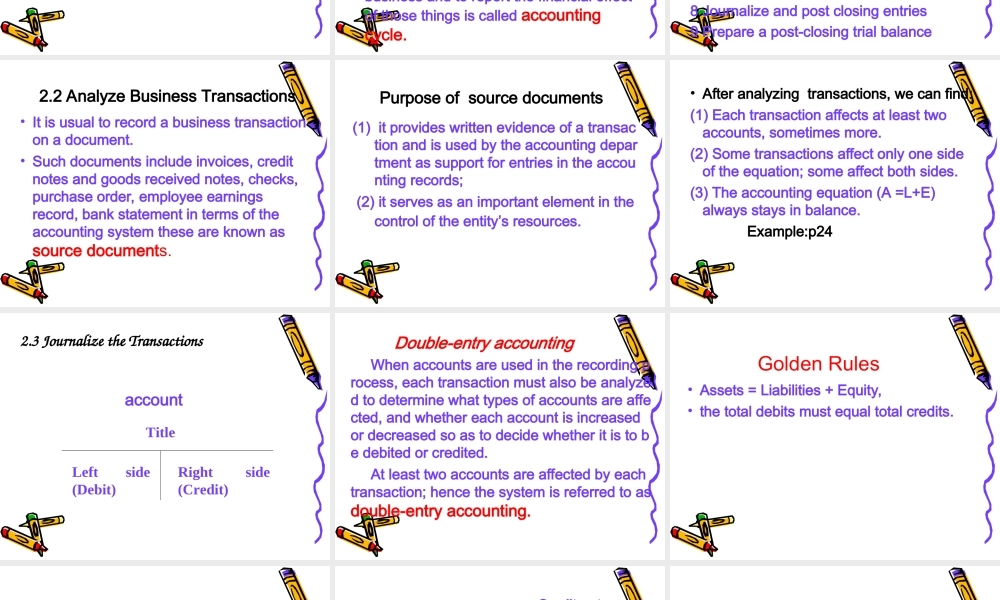CHAPTER 2 CHAPTER 2 THE ACCOUNTING CYCLETHE ACCOUNTING CYCLECHAPTER 2 CHAPTER 2 THE ACCOUNTING CYCLETHE ACCOUNTING CYCLE Learning Objectives:After studying this chapter, you should be able to:• Understand economic events and business documents• Understand T accounts and debit & credit rules• Journalize and post transactions• Prepare a trial balance• Understand the need for adjustments• Prepare the financial statements• Understand the need for closing• Understand the accounting cycle2.1 Accounting Cycle• In order to report on the periodic progress of the entity over time, its life is divided into arbitrary time periods of equal length called accounting periods. The length of the accounting period depends on the needs of interested parties. • yearly statements • half-yearly statements• quarterly statements external parties to provide more timely information• Monthly statement • Weekly statementinternal use by management • During each period, steps and procedures are followed within the accounting function to ensure that all transactions are properly recorded, and records are kept to ensure that the financial statements can be prepared at the end of accounting period. • The sequence of procedures used to keep track of what has happened in the business and to report the financial effect of those things is called accounting cycle.Required Steps in the Accounting Cycle1 Analyze business transactions2 Journalize the transactions3 Post to ledger accounts4 Prepare a unadjusted trial balance5 Journalize and post adjusting entries6 Prepare an adjusted trial balance7 Prepare financial statements8 Journalize and post closing entries9 Prepare a post-closing trial balance2.2 Analyze Business Transactions• It is usual...




